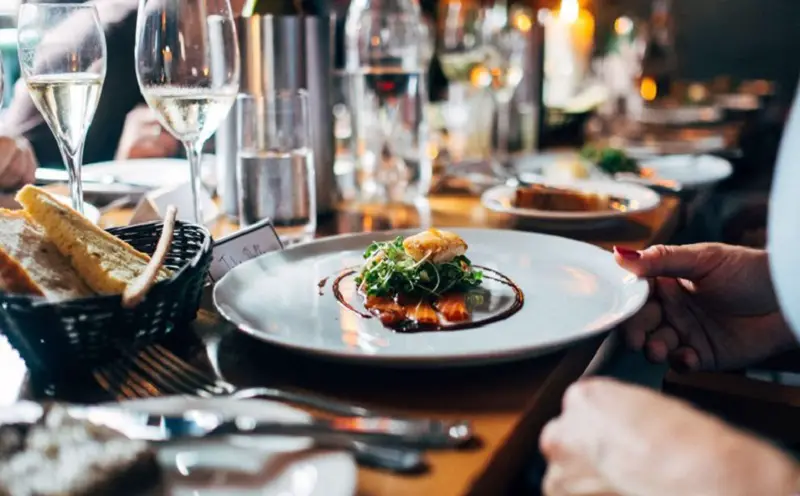The restaurant industry is a dynamic arena where customer tastes, operational efficiency, and innovative trends converge. To stay competitive and profitable, it’s crucial to leverage the art of project management to unlock hidden value within your professional establishment.
From revitalizing menus and fine-tuning supply chains to embracing technology for enhanced engagement, effective project management touches every facet of your business.
This guide outlines practical strategies on using project planning and execution to streamline operations, elevate customer experiences, and ultimately forge a stronger brand footprint.
7 Restaurant Projects That Unlock Value in Your Industry
Embark on a transformative journey with these 7 restaurant projects tailored to unlock significant value in your industry. Each initiative is crafted to enhance your operations.
1. Streamline Your Menu
When you simplify your menu, it’s not just about cutting down on costs and reducing kitchen complexity. It’s an intentional strategy to focus on your restaurant’s strengths, hone in on dishes that resonate with your guests, and ensure consistency in both quality and presentation.
Start by identifying which items garner the most favorable responses and sales, then gradually phase out those that underperform. Embracing a streamlined menu also supports inventory control, easing the burden of stock management while minimizing food waste.
2. Optimize Vendor Relationships
Consistent communication and negotiations not only improve the terms of purchase but also ensure a steady supply of high-quality ingredients. Build partnerships based on mutual trust and reliability; this will help manage costs effectively without sacrificing the caliber of your offerings.
Consider incorporating local suppliers to enhance your menu with fresh, regional produce while supporting the community. This can differentiate your brand as one that values local businesses and sustainability, which often resonates well with young and old customers today.
3. Focus on Employee Wellness
Employee wellness is essential for a thriving restaurant. By creating a supportive environment, you ensure that your staff stays motivated and healthy, which in turn improves their productivity and the quality of service they provide to customers. It can also improve project completion.
Incorporate practices like flexible scheduling for a better work-life balance. Go the extra mile and hire a company that can deliver dietitian-approved meals during shifts. This not only promotes better eating habits but also showcases your commitment to their well-being.
4. Implement Efficient Scheduling Systems
With fluctuating customer footfall, being able to quickly adjust staffing levels ensures you’re not caught off guard during rush hours and aren’t overstaffed during quiet periods. Embrace tools that streamline scheduling and forecasting to optimize costs while maintaining service quality.
The right system also empowers your team by giving them the ability to communicate availability. When staff have some control over their work schedules, it boosts morale and retention rates. High employee satisfaction is often reflected in better customer service.
5. Utilize Technology for Better Customer Engagement
Digital tools can amplify the customer experience, from online reservations and ordering systems to personalized marketing communications. Introduce apps or platforms that collect data on customer preferences, allowing for a more tailored and personalized service approach.
Furthermore, social media offers an expansive stage to interact with customers in real time. By maintaining active profiles that highlight daily specials, behind-the-scenes glimpses, and patron reviews, you nurture an online community that feels connected to your brand’s story.
6. Adopt Waste-Reduction Initiatives
Waste reduction is not only an environmental imperative but also a means to enhance the profitability of your restaurant. Crafting initiatives around minimizing food waste, like portion control and inventory tracking, can generate significant cost savings.
Look into systems that help monitor waste and provide insights into areas where you can improve operational efficiencies. In addition, consider implementing recycling programs and composting options for organic waste. Engaging customers with your sustainability efforts.
7. Enhance Customer Experience Through Restaurant Design
By carefully considering elements such as lighting, acoustics, and furniture, you create an environment that complements the cuisine and service style of your establishment. Focus on a layout that facilitates the smooth flow of occupants while maintaining an inviting atmosphere.
Invest in distinctive decor elements that tell your brand’s story or reflect the culinary journey you are presenting to your customers. The ambiance created by these choices can turn a simple meal into an immersive experience, encouraging diners to linger longer and increase spending.
In Conclusion…
Embark on a journey of transformation within your restaurant by implementing the project management strategies shared here. Each step taken toward optimization not only adds intrinsic value but also shapes the memorable experiences that keep customers coming back.
Start small, focus on what you can improve today, and set the stage for continuous innovation. Take action now to refine your operations and cultivate a thriving culinary destination.

